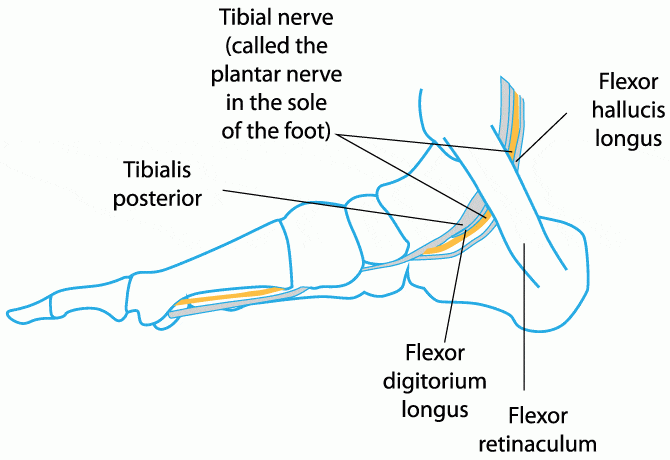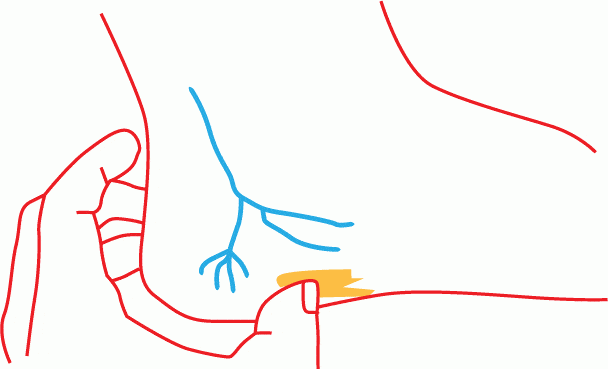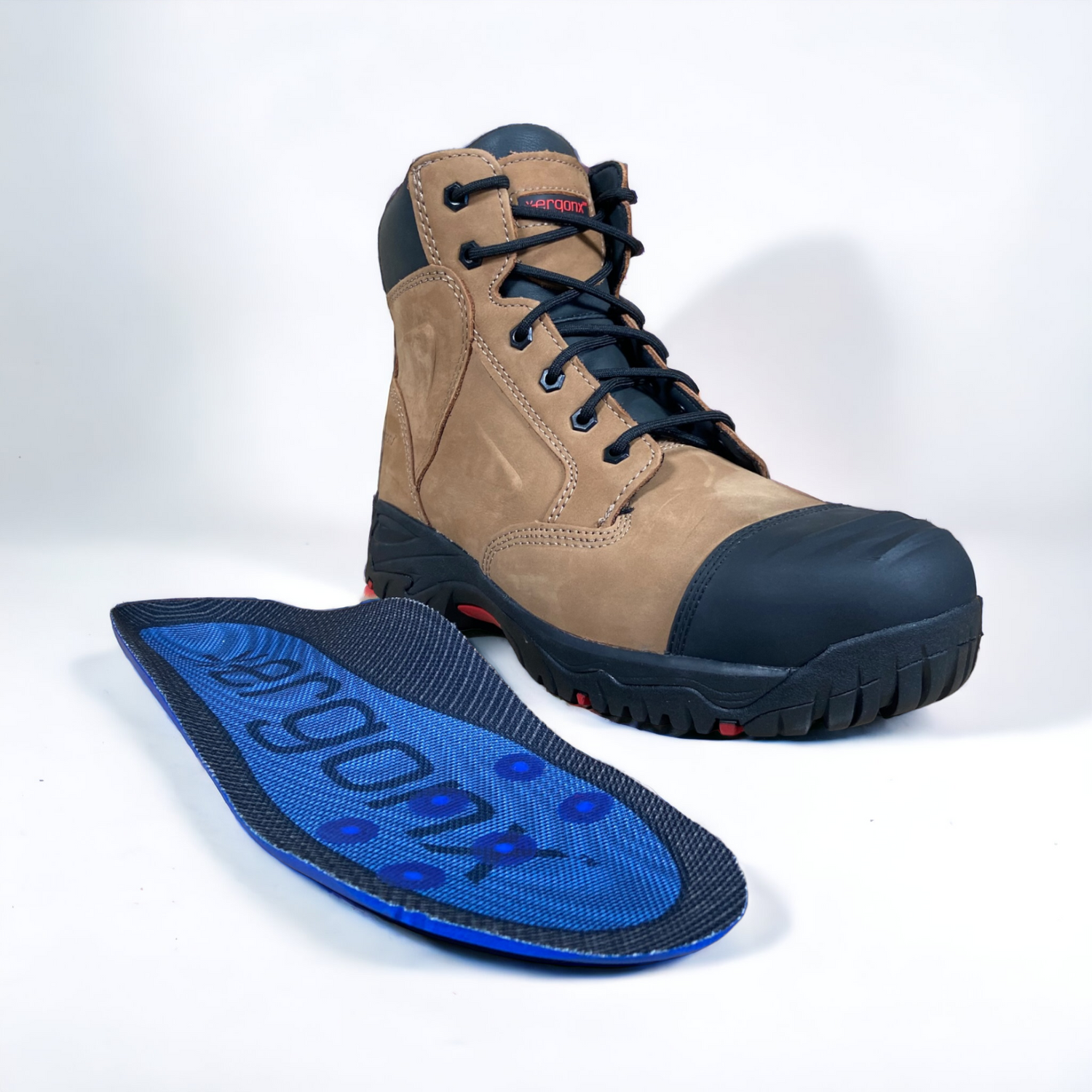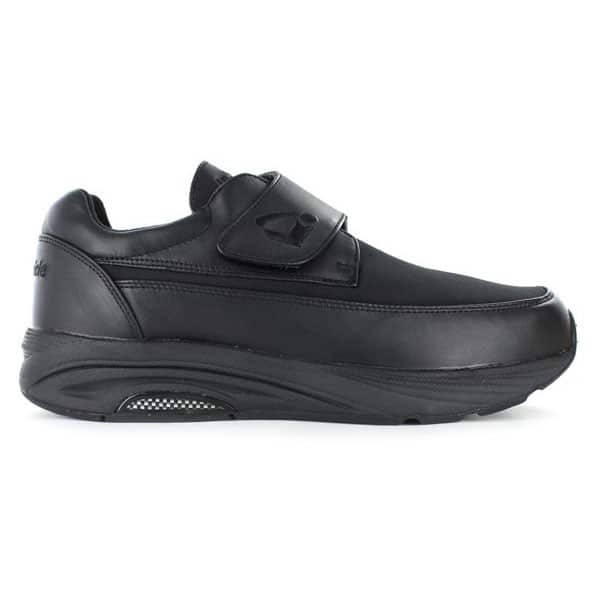Medial Calcaneal Nerve Entrapment
The medial calcaneal nerve is a branch of the tibial nerve, which is a major nerve supplying most of the muscles and skin of the back of the leg. The medial calcaneal nerve arises from the main nerve of the inner side of the anke, perforates the laciniate ligament, travels downwards passing below the bony projection on the inner side of the ankle, and supplies the skin over the medial aspect of the heel.
A nerve can become entrapped on its way from the organ that it supplies to the central nervous system as it passes in between the bones and their associated ligaments or through the muscles. Usually in case of entrapment, the nerve gets compressed between a static and a mobile surface. As the body moves, the nerve is subjected to repeated sliding or friction, leading to compression and trauma. This trauma may damage the outer sheath of the nerve that helps with signal transmission and cause other structural alterations that eventually lead to pain and loss of function.
